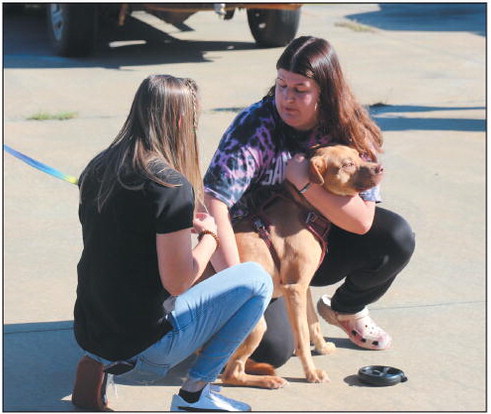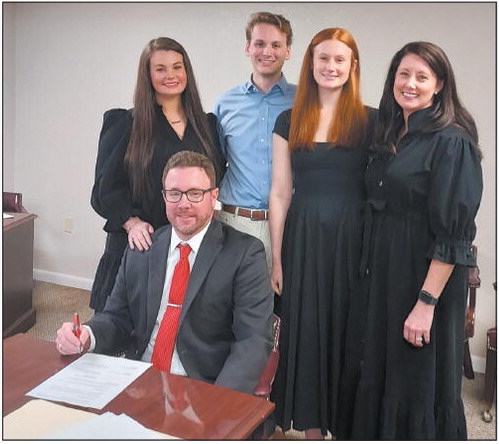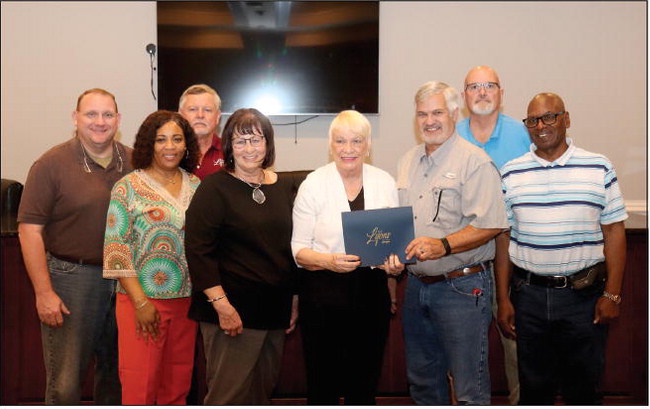continued from page initial phase ….
continued from page
initial phase of clearing.” He explained, “We are just trying to clean it up a little bit to make some assessments on it and to look into the feasibility of is there any potential in the future that it can be used for train traffic again.”
Thrift said the initial public announcement was released after bids were solicited for the cleanup. “The first bid did not go through, so there was a second bid. We stepped back from the original eight- mile project to five miles because the prices were higher than the money we had to spend. We had to sharpen our pencils and look at it a second time.” Since a lower bidder has been selected, the clearing bid process has been closed, but a contract between the state and a contractor has not yet been signed.
Thrift explained that the Moxley property is one of the last residential properties on the route affected by the project. The end point for the current Phase 1 is 1,000 feet past the end of Amberwood Drive. He noted the complete railroad line, which goes to Hazlehurst, is in a dilapidated condition “as far as we know. We have to get on the ground and see what condition it is in and to see if there is any potential future use for it and what it would take to get it back into working order.” He noted that there would have to be restoration of tracks if potential (is there) “but we do not have immediate plans to reestablish train traffic on this line.”
Thrift emphasized that while there is no possible way Moxley and others in the subdivision could lose any of their property since work would occur on stateowned property only, “the privacy issue could be debatable.” He added, “We are trying to look at these things with the concern of the citizen in mind. But the fact of the matter is this railroad… has been here since the early 1900s. Everything else was built around it.” He allowed, however, that the railroad was abandoned during the period of time when a lot of the homes at Amberwood were constructed.
The clearing project is being funded by the state legislature. It is expected that there will be additional phases for clearing the some 20 miles of track between Vidalia and Hazlehurst if state lawmakers and the GDOT Board decide it is worthwhile, Thrift said, adding, “If rail service is established again, that could be a huge economic development for the community, but it is a potential use and nothing more than that at this point.”
Thrift emphasized, “Our top priority is not to daylight folks. If people have an established vegetative buffer between the railroad right of way and personal property, we don’t want to go in there and cut down every tree so that basically their privacy is removed. As much as we possibly can we want to leave that vegetative buffer in place.”
He added that the project working within the 25-foot of centerline of the railbed is a goal “but not necessarily dead set in stone.” He said 25 feet clearance from the center on either side of the bed “would do it for a train, but, at the same time, you don’t want a three-foot diameter pine tree even if it is outside the 25-foot zone. We have an obligation to clean up this line regardless of any potential future use. We don’t want anyone hurt. The finger would be pointing back to us.”
Thrift said there is no requirement for a public hearing on this project, to his knowledge. “The work is being done on state property. There is no access to any private property not owned by state unless an agreement is worked out between the contractor and land owner.”
Thrift added, “I have probably spoken to a dozen citizens and everyone is as understanding as they can be. I have tried to be the same way. I am not only a GDOT employee, I am a tax-paying citizen. I tried to look at this through the lens of how I would I feel if this was my property. I have tried to hold a balance.” He said that, to his knowledge, the City of Vidalia has nothing to do with this project, although city officials have been made aware of the work. “All comments and concerns can come to me, and we will address them on a case-by-case basis,” he assured. Contact him at 912-285-6009 or online at jthrift@dot.gov.
“We (GDOT) don’t have any immediate plans to do any type of reconstruction activities on this line. We plan to do an initial phase of clearing.”
– Justin Thrift, Rail Development Specialist, GDOT







